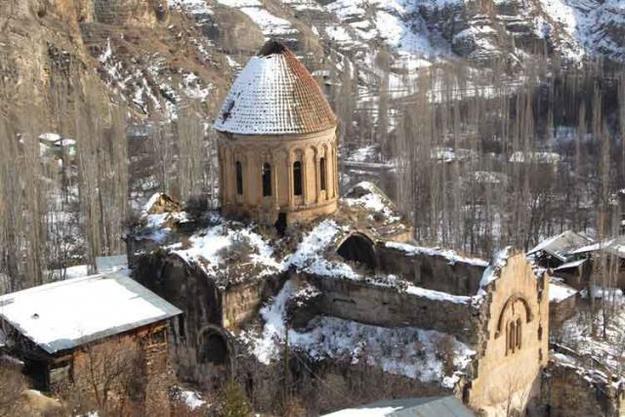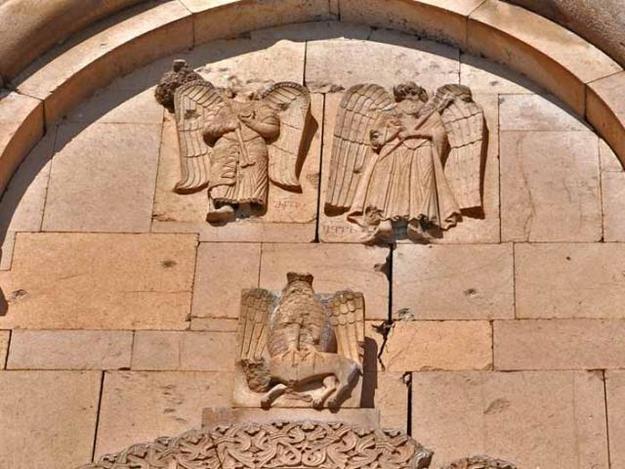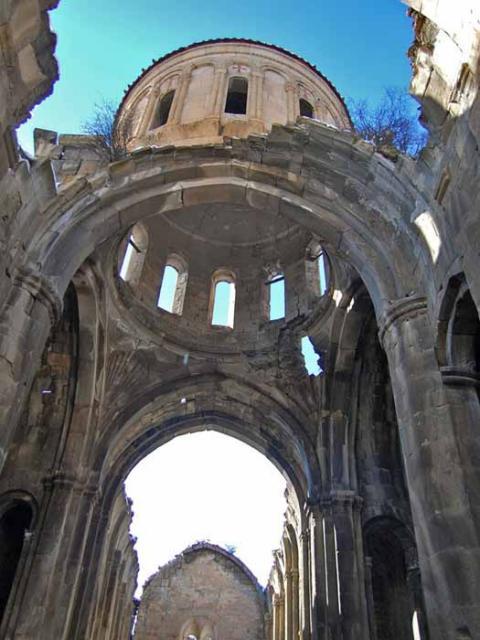Oshki
2012 World Monuments Watch
In a valley flanked by towering mountains in northeastern Turkey stand the majestic ruins of the tenth-century Georgian monastery of Oshki. One of the most important monastic churches of the period and region, it was built during the reign of David III Kuropalates, the ruler of Tao-Klarjeti and an ally of the Byzantine Emperor. The church follows a Latin cross plan, with triconch ends on three arms, and is crowned by a high conical dome. Its monumentality speaks to the flourishing of medieval Georgia at the time of its erection, and its remains serve as a chronicle of history: the exterior of the building is covered with inscriptions about the patrons and builders of the church. In the sixteenth century this region was absorbed by the Ottoman Empire and its many monasteries were forsaken. For a time, Oshki was used as a mosque after the conversion of the local population to Islam, but was eventually abandoned. This 1,000-year-old monument has suffered heavily from prolonged neglect. Over time, large areas of the vaults have collapsed, and today many parts of the monument are in an alarming condition. Measures are urgently needed to stabilize the structure and protect against vandalism and theft. The opening of the border between Georgia and Turkey in the early 1990s, following the dissolution of the Soviet Union, has allowed improved relations to develop between the two countries. Through a spirit of shared responsibility, it is hoped that the preservation of one of the most important medieval Georgian monuments in Turkey can be assured.
Since the Watch
Following the 2012 Watch, the Turkish government announced that it would restore Oshki and a similar nearby site, with the participation of Georgian experts. A project architect was selected through a public bid process in June 2012. In September 2012, WMF and other experts were able to confirm that due to previous collapses the structure is in an exceptionally critical state. March 2013



